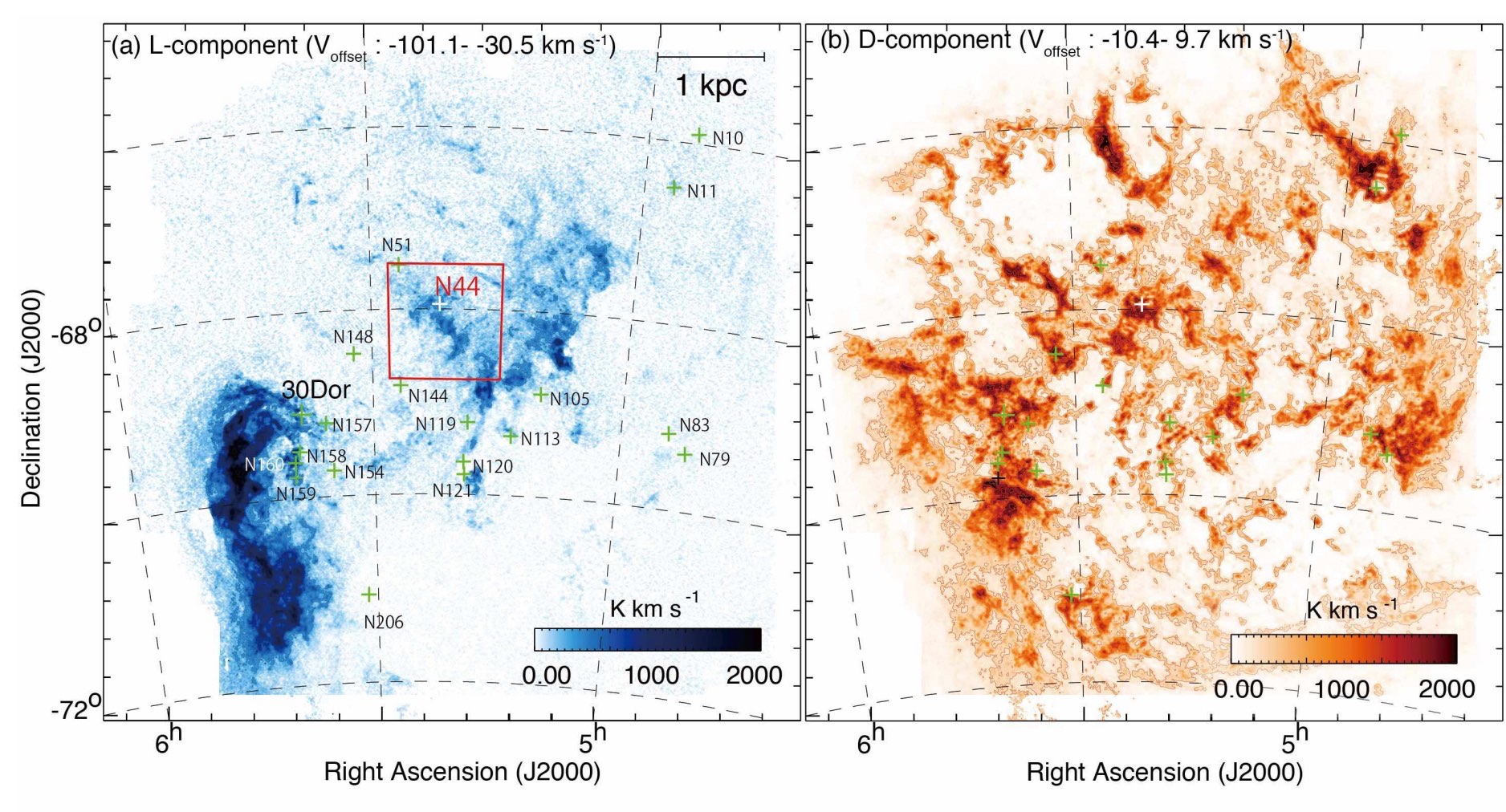| 5th of April 2018 |
|---|

|
| Star formation in the Large Magellanic Cloud |
|
Tsuge et al. have carried out a detailed analysis of the neutral
hydrogen distribution in the N44 high mass star formation region in
the Large Magellanic Cloud. They used archival Parkes and ATCA data
to show that the N44 region consists of two velocity components
separated by 20 to 30 km/s, which are part of previously identified L-
and D- components. These two components show signs of dynamical
interaction including bridges and spatially complementary
distributions, leading Tsuge et al to hypothesize that the two
components have been colliding with each other over the last 5 million
years, with this interaction triggering the formation of the O and
early B stars which are ionizing the N44 region.
The figures above show the neutral hydrogen intenisty maps of the L-component (left) and D-component (right). The L-component has a highly asymmetric distribution and mainly consists of two clumps. The D-component extends over the whole LMC with many cavity-like structures corresponding to super giant shells. The integration velocity range is -101.1 to -30.5 km/s for the L-component and is −10.4 to 9.7 km/s for the D-component. Crosses show the positions of luminous HII (ionized hydrogen) regions. Results are presented in the preprint of the paper. |